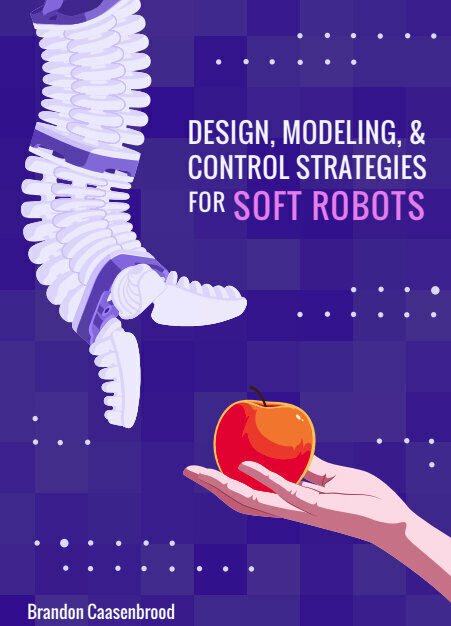Design, modeling, and control strategies for soft robots
Brandon Caasenbrood received his PhD degree with the distinction cum laude at the Department of Mechanical Engineering on January 10th.
![[Translate to English:] [Translate to English:]](https://assets.w3.tue.nl/w/fileadmin/_processed_/c/7/csm_Caasenbrood%20Banner%20image%20option%202_0e1adc0500.jpg)
Robotics has a rich history in the industrial sector, revolutionizing productivity and precision since the advent of industrial robots in the 1950s. Nowadays, there have been remarkable advancements in robotics that resemble biological organisms, yet their safe interaction with their environment remains a challenge. Robots are normally made from rigid and heavy materials, making them vulnerable to collisions and impacts. Soft robots, which are made from less rigid materials, could solve these issues. In his PhD research, Brandon Caasenbrood looked at several new approaches to design, model, and control soft robots.
Inspired by a technology proposed between the early 1950's and 1990's, such as the McKibben actuator (1952), soft robots are made using flexible materials like rubber and driven by fluidics instead of electricity.
Unlike traditional rigid robots, these soft robots have the remarkable capability to imitate the movements and behaviors observed in living organisms. A key advantage of soft robotics lies in their ability to interact safely and delicately with their environment, without relying on advanced stabilizing control techniques.
As a result, they possess great potential for a wide array of applications in healthcare, manufacturing, agriculture, and robotic exploration. This versatility is frequently derived from the diverse abilities demonstrated by nature. For instance, it draws inspiration from the dexterity exhibited by an elephant's trunk and the environmental adaptability displayed by an octopus when navigating narrow spaces. The field is believed to be filling the gaps between robotics and nature.

Limited integration
Despite soft robotics developments dating back to the 1950s, their integration within the industrial sector has remained limited. This can be attributed to numerous open and multidisciplinary challenges that have become apparent, particularly since its recent resurgence in the academic sphere.
First, there is a scarcity of approaches that enable the design of robots based on structural deformation for motion. Traditional engineering principles for robotics emphasize the minimization of structural deformation, which contrasts with the unique requirements of soft robotics.
Second, developing fast and accurate models that facilitate classical controller design, as is commonly done in rigid robotics, proves to be a challenging task. It necessitates a delicate balance between the principles of material science and control theory.
Design, model, and control
For his PhD thesis, Brandon Caasenbrood looked at new approaches to design, model, and control soft robots.
First, an optimization framework is presented that automates the design process of soft actuators, efficiently translating user-defined requirements into viable structures, and predicting deformation behaviors using standard continuum mechanical models. This enables a shift away from slower, manual design methods to a more efficient, predictive approach. The optimized designs can be directly turned into 3D models compatible with Stereo-Lithography (SLA) 3D printing.
Second, Caasenbrood introduces a simplified model based on flexible beams called Cosserat beams, which enable real-time simulation and control of soft robot by exploring energy-based modeling and control strategy. It also presents a new control method that adjusts the robot's movements to efficiently reach and maintain a target position using energy minimization. This approach is applied to simulate the movements of soft robots inspired by natural organisms, such as the flexible arms of an octopus or the trunk of an elephant, allowing them to be controlled in a more refined and effective manner; and even used to recreate the famous Suzumori's soft gripper experiments (1989) from literature from 30 years ago.
Finally, the thesis presents Sorotoki, a user-friendly MATLAB toolkit, designed to support various aspects of soft robotics research from design and modeling to control.
Title of PhD thesis: Design, Modeling, and Control Strategies for Soft Robots. Supervisors: Henk Nijmeijer and Sasha Pogromskiy.
Media contact
Latest news


![[Translate to English:] Photo: Bart van Overbeeke](https://assets.w3.tue.nl/w/fileadmin/_processed_/e/0/csm_BvOF%202019_1031_BHF%20license%20TUe%20ILI%20copy_8a50884392.jpg)